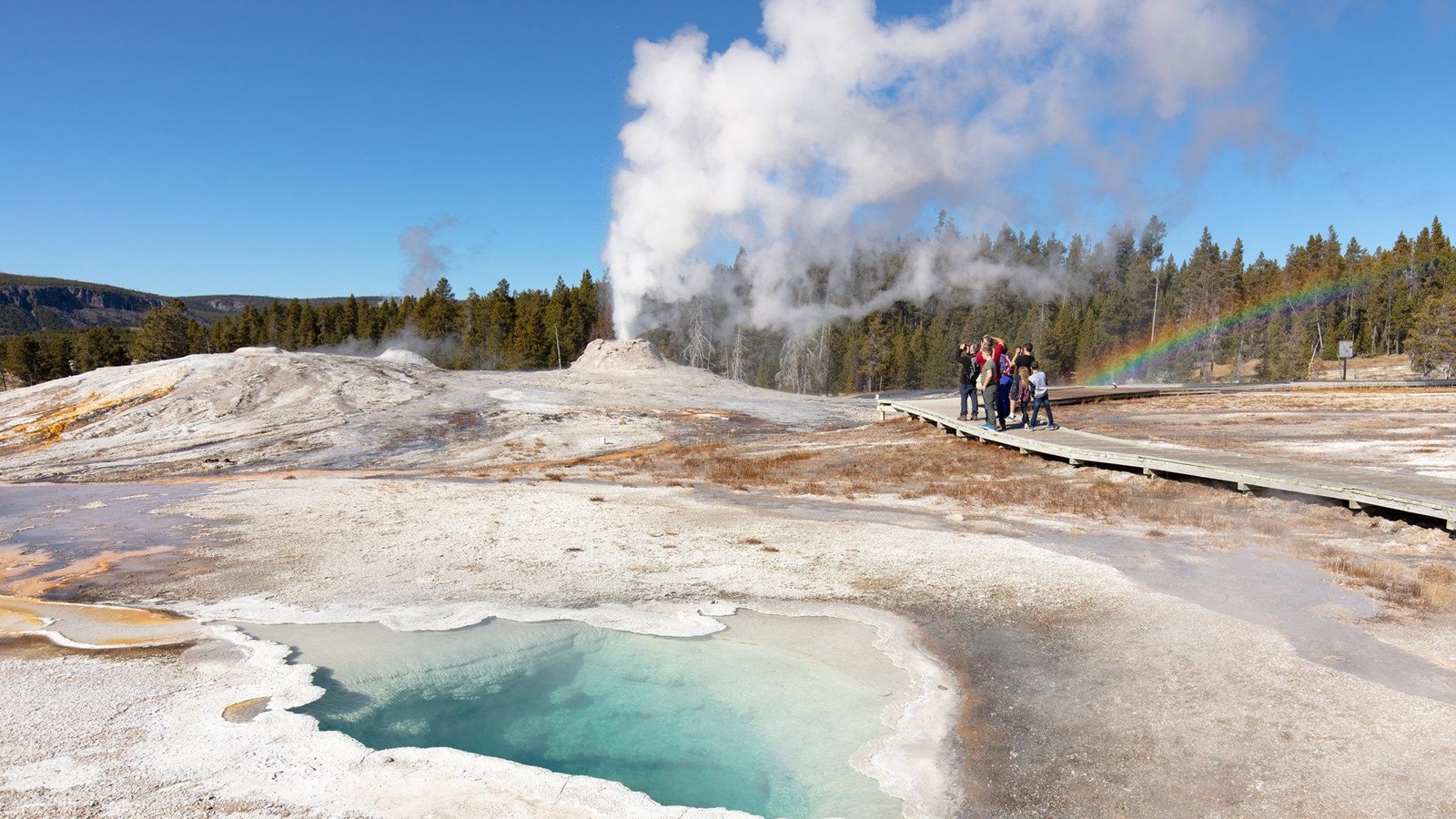Last updated: November 27, 2024
Place
Lion Geyser Complex

NPS / Jacob W. Frank
The Lion Geyser Complex, also called the Lion Group, is a collection of seven hydrothermal features—four geysers and three hot springs. Though, even the hot springs have a history of erupting. The largest geyser in the group is Lion Geyser, which naturally comes from the largest cone. Lion Geyser actually has a series of eruptions within a single eruption cycle.
Little Cub Geyser was the most frequent erupter of the group, and comes out of the cone on the southern side of the mound. Since 2004, however, the frequency has increased in variety, from anywhere from every hour up to nearly two days later.
Meanwhile, in the center of the group are Lioness Geyser and Big Cub Geyser. Both rarely erupt, but when they do, they reach up to 50 feet (46 m) into the air. Goggles Spring, North Goggles Geyser (no eruptions since 2004), and the unofficially named "Kitten Geyser" round out the major thermal features of the Lion Geyser Complex.
Lion Geyser Complex has an average temperate of 197.1°F (91.7°C), an average pH of 8.8, and an average conductivity of 1979.33 uS/cm.
Geysers
Geysers have constrictions in their plumbing systems that prevent water from moving freely to the surface where heat would escape. Water beneath the constrictions creates a buildup of steam. Eventually the steam pushes water past the constrictions and the geyser erupts.
Hot Springs
Hot springs are the most common hydrothermal features in Yellowstone. Their plumbing has no constrictions.
Superheated water cools as it reaches the surface, sinks, and is replaced by hotter water from below.
This circulation prevents water from reaching the temperature needed to set off an eruption.
Color & Heat Lovers
Hydrothermal features are also habitats in which microscopic organisms survive and thrive. They are called thermophiles: "thermo" for heat and "phile" for lover.
Although they are too small to be seen with the naked eye, trillions are grouped together and appear as masses of color. They are nourished by energy and chemical building blocks.
Colorless and yellow thermophiles grow in the hottest water.
Orange, brown, and green thermophiles grow in cooler waters.
Imagine living in near-boiling temperatures, in hydrothermal features with the alkalinity of baking soda, or in water so acidic that it can burn holes in clothing. Microorganisms in Yellowstone need these extremes to survive.
Upper Geyser Basin
The majority of world’s active geysers are in the Upper Geyser Basin, including Old Faithful. Only four other places in the world have large concentrations of hydrothermal features: Russia (Kamchatka), Chile, New Zealand, and Iceland.
The heat for the hydrothermal features comes from Yellowstone’s volcano. Molten rock or magma may be as close as 3-8 miles (5-13 km) underground. Rain and snow supply water that seeps down several thousand feet (more than a kilometer) below the surface where it is heated.
Underground cracks form a natural plumbing system. Hot water rises through the plumbing to produce hot springs and geysers.
Use Caution in Hydrothermal Areas
- Stay on boardwalks and designated trails.
- Hydrothermal water can severely burn you.
- Never run, push, or shove.
- Supervise children at all times.
- Do not scratch hydrothermal mats.
You are responsible for your safety.
Think safety, act safely. Yellowstone is a dangerous place.
